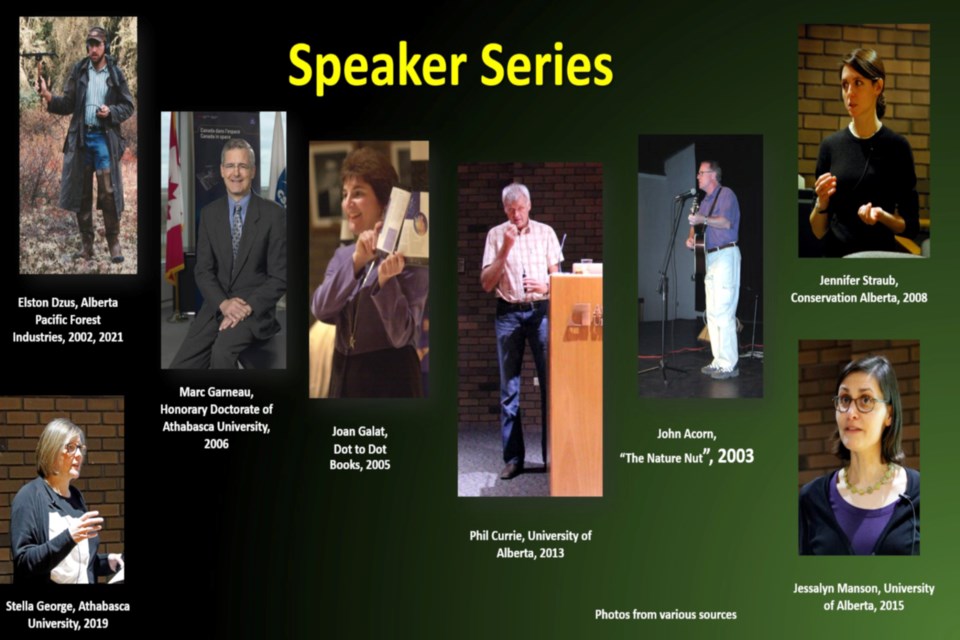ATHABASCA — How do you help rural residents access science and make it interesting to a wide variety of ages?
Those were the questions asked by some staff at Athabasca University (AU) in the 1990s which led to the formation of Athabasca Science Alive, the precursor to what is now Science Outreach – Athabasca.
“I had applied for grants and failed but Lisa Carter decided to apply to promote science through NSERC, the Natural Sciences and Engineering Research Council of Canada, and she was the one who initiated the grant application,” said founding member and former AU faculty member Robert Holmberg. "I was a signatory to it, but Lisa did the work and lo and behold, she was successful where I had failed.”
Carter was then Dean of the Faculty of Science and Technology at AU and co-chaired Science Outreach with Holmberg and when she left the dean’s chair, Shauna Zenteno stepped in as both dean and co-chair.
“You can't operate without science and technology every day, many, many, many different times,” said Holmberg. “The average adult hasn’t taken more than a couple of science courses that were required … yet science and technology really affects them. So, we always like talking about science and technology because it's got lots of implications for vocations and just general interest."
Every year the topics have varied from land to space and covered such topics as the night sky to the chemistry of chocolate, the Athabasca River basin to the Northern lights, rain forests to ancient civilizations, and next, space weather.
“Usually, we're averaging about 35 to 45 people in our speaker series, which for a town of less than 3,000 and some people from (Athabasca) County, it was OK,” he said. “But since we started putting them on YouTube, we've at least doubled the audience because we get the people who attend the presentation and then we get people afterwards who attend the presentation via YouTube.”
But hosting the speaker series isn’t the only thing Science Outreach – Athabasca does.
“All universities do outreach activities and Athabasca University does outreach activities, but Science Outreach – Athabasca for Athabasca University had done more outreach than any other department and we've done it consistently,” he said.
“When the university does it, it's a big production with lots of advertising and money and we do small things to small groups of people, but we've done it consistently over 21 years and audiences ranging from pre-kindergarten to adults, and I'm proud of it.”
Those stats include over 850 separate talks, presentations, or activities like the annual Christmas Bird Count in over 25 communities across northern Alberta reaching approximately 44,000 children and adults.
“We've attracted about $500,000 in external funding from the university over the years for various projects,” Holmberg said. “(And) we’ve had a whole pile of smaller grants from individuals as well as businesses and the county.”
Holmberg also credits AU for their steadfast support.
“The university has been very supportive,” he said. “Probably Science Outreach would have folded if it wasn't for Athabasca University's support. Volunteers get tired after a while. Having a paid position for organizing meetings and paying bills and whatnot is crucial we have found.”
One of the main reasons Athabasca Science Alive folded was because there were only volunteers who didn’t have time to dedicate to arranging and promoting the events, so Linda Lindballe has been a major reason Science Outreach keeps going strong.
“Science Outreach helps the university reach out to the community in various ways,” Holmberg said. “It would be a great thing for everyone to realize what we have been doing for the past 21 years and what we hope to continue to do for the foreseeable future.”
For more information on how much Science Outreach – Athabasca has accomplished, you can watch the video Holmberg created on their YouTube page at youtube.com/watch?v=jtJWZUIaaIw. You can also find previous presentations through the Science Outreach – Athabasca website: scienceoutreach.ab.ca/.
On Nov. 29, observatory researcher Ian Schofield will talk about some of the space weather research that takes place at AU, starting at 7 p.m. on Zoom. You can find the link at the Science Outreach - Athabasca Facebook page.



